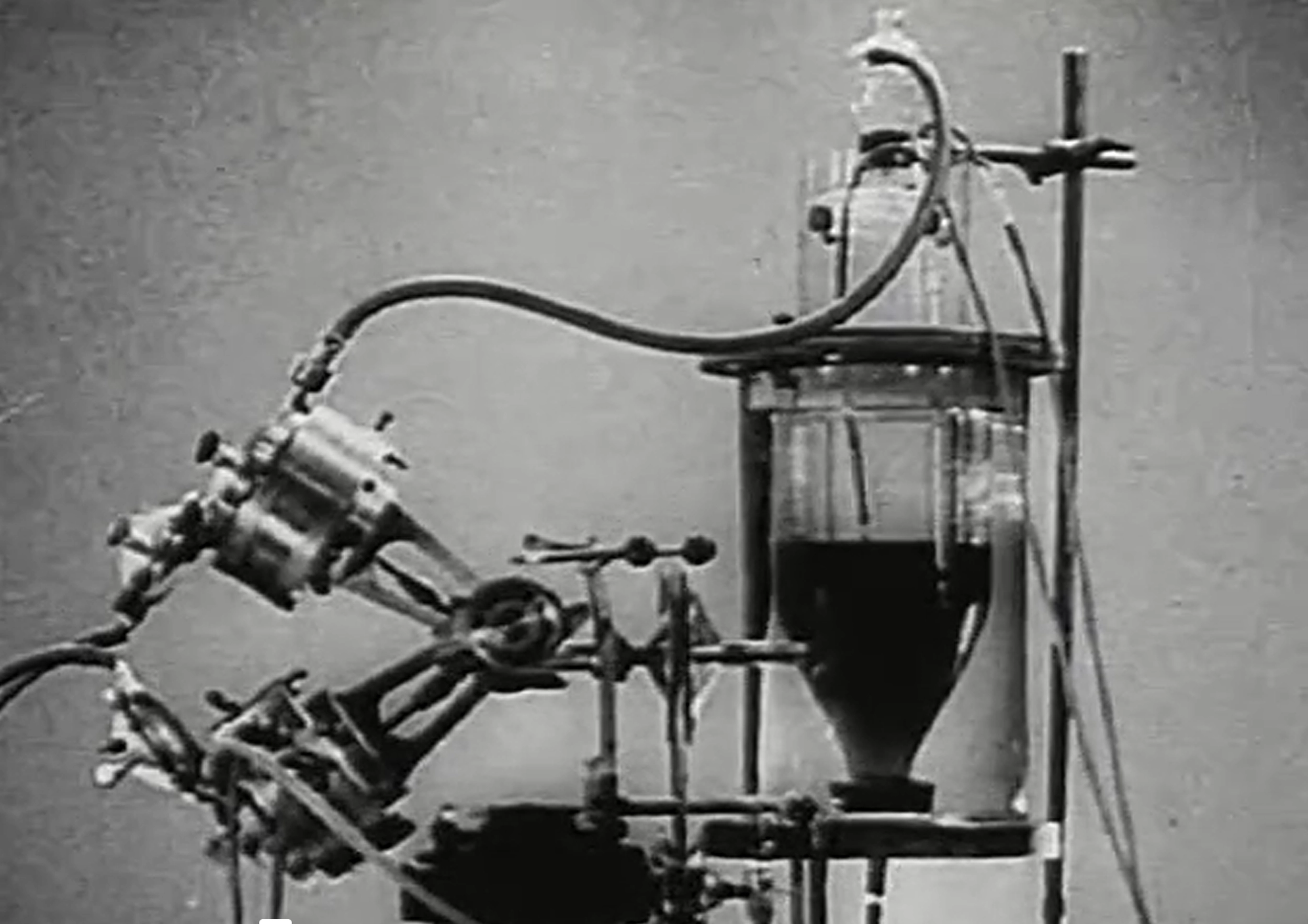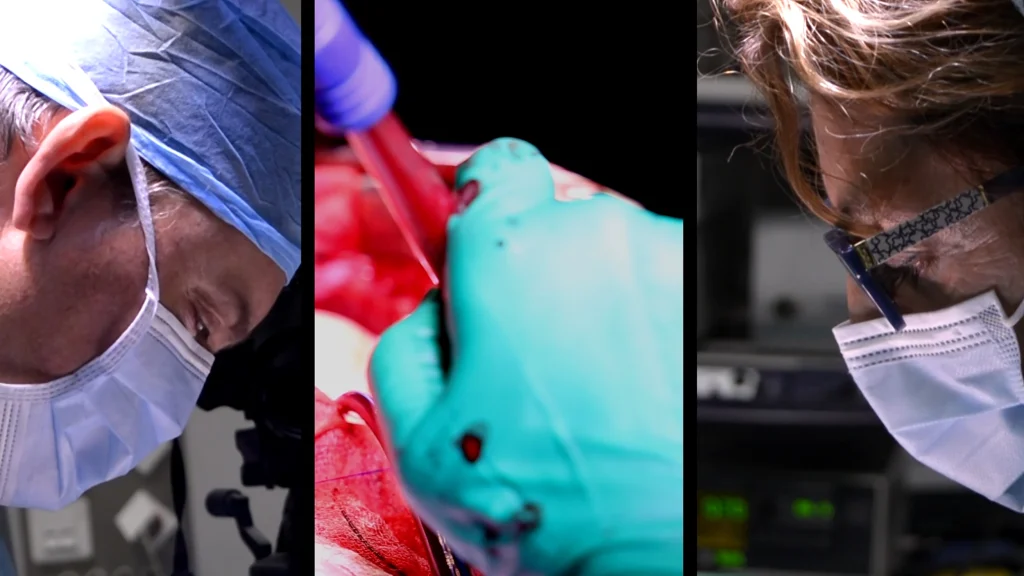Give my Creation... Life!

Technical Specifications:
Year: 2016
Size: variable
Technic: Interactive installation
Weight: — kg

Technical Specifications:
Year: 2016
Size: variable
Technic: Interactive installation
Weight: — kg
«Experiments in the Revival of Organisms»

Technical Specifications:
Dr Sergei S. Bryukhonenko
Audiovisual archive 4:3 Single-channel
Year: 1940
Duration: 19’35»
«Experiments in the Revival of Organisms»

Dr Sergei S. Bryukhonenko
Audiovisual archive 4:3 Single-channel
Year: 1940
Duration: 19’35»
The Statute of life in the biotechnological era: from “ the organless body” to “ the bodyless organ”. About the Give my creation …Life!
The question about the body location in the biotechnological era results increasingly diffused and less obvious. The out-of-body existence is now a reality. The image of an isolated heart, out of the body, beating autonomously over the time that it takes between removal from the donor to the transplant to the receiver, embodies in an almost exclusively iconic way the body’s statute at present. A body void of life, which abandons its unitary condition as an agglutination of organs. A body whose limits become blurred in a fragmented existence.
The possibility of organs moving from one body to another via transplants or xeno-transplants (the organ exchange between different species), or a human ear being grafted to a mouse’s back, or that, the development of biological tissues, via cell culture techniques and tissue engineering without the support of an organism (with such results as the production of a burger in the lab), are examples which tell us about a world, ours, where life is developed away from the body. The organ’s subordination to the body and their biological dependence becomes unnecessary.
The body is no longer, or at least not exclusively, the privileged space for the development of life. The fragment has emancipated from the whole and has an autonomous, independent position. Remote life. As if it were a metaphor made true, the surreal dream of a fragmented body has materialized, literally, in the biotechnology era. The 21st Century body, in the antipodes of its Rennaissance image, embodied in that vitruvian man drawn by Leonardo Da Vinci: a humanist body so perfect that could be enclosed by pure geometrical forms, such as a square (homo ad quadratum) or a circle (homo ad circulum) and whose relationship between the parts and the whole responded to a perfectly measurable ratio.
Viewed in perspective, western art is fundamentally corporeal, from the Discobolus of Myron to Orlan’s performances. But it was the 20th century the one that allowed us to imagine the existence of an “organless body”, first with Antonin Artaud (1948) and afterwards, with Gilles Deleuze and Felix Guattari, who took up and developed the French playwright Mille Plateaux’s ideas (1980), distributing the potential of this “organless body” into three registers: organization, significance and subjectivation. Art has accompanied (and often conformed) the discourse on corporality throughout the history of art, and the present time is not an exception.
The project Give my creation…Life!, by the OPN Studio collective (formed by Susana Ballesteros and Jano Montañés) makes us face a new meaning of this “organless body” which reverts the terms of the equation: the existence of a “bodyless organ”.
The persistence of the living
The vitality that characterizes the natural materials’ behaviour constitutes the background for the location of OPN Studio’s work. The possibility of using a biological heart as a source of energy to feed a machine, as proposed by Give my creation…Life! project, is embedded within an artistic tradition which dates, at least, from the 60’s of the 20th century, when art forms such as a performance or body art, land art or art povera, began to explore the agency (the vital impulse) of the materials from nature. Forests and lakes, lightning and wind, rivers and tides, pumpkins and lettuces, human and non-human animals, flooded the artistic creation at that moment… But It was not, neither then nor now , the mere appropriation of a natural material but the exploration of its behavior, which would eventually articulate a real language of the living. The nature in vivo, doing what nature does: growing up, developing, mutating, getting dis-)organized…beating.
Within the context of artistic practices located in the fertile crossroads of art, science and technology there are diverse artists who have worked, as in the case of OPN Studio, relating biological materials with machines, taking us into the material, discursive environment of the cyborg ontology .
The theorisation of the cyborg as a subject, and not just a body, has great importance in the thinking associated to the new technologies, thanks to of Donna Haraway’s contribution, in her well-known A Cyborg Manifesto in 1985. According to Haraway, the traditional statute of the body has changed substantially with the multiple techno-scientific developments: not finding any more purely biological bodies but techno-bodies, in which is not possible to discern between the natural and the artificial. Inasmuch as the cyborg is not a fiction but a reality, there is a demand to redefine what “human being” means; since the cyborg is intimately linked with a posthuman condition approach, formulated by Katherine Hayles in How we became posthuman (1999) and, earlier, and fully exploiting her philosophical (or even anti-humanistic) potential, by Rosi Braidotti in The posthuman (2013, translated into Spanish in 2015).
The particular relation between a heart and a machine proposed by OPN Studio has, among others, the aim to visualize the vitality of the living material. Materialized into the beating heart, the living claims its potential and becomes the depository of that ideal of autonomy, held by the machine in the past. Indeed, the autonomy ideal of machines had always two sides: On the one hand, the modern, technophile celebration that came with the irruption of the first robots of the 18th century but also, on the other hand, a very intense techno-phobic current, directly proportional to the fascination it raised. The machine (and the possibility of total autonomy) has been drawn up in science-fiction (including cyberpunk) books and films. Let us not forget that the famous Robotics Laws by Asimov, are merely some limits to the feared machine emancipation. That is why the project Give my creation…Life!, where machine autonomy has moved into life itself, acquires a dimension of vindication of the living, specially in an era where technological dependence is practically complete.
From the perspective of this examination of a language of the living, the project Give my creation…Life! is embedded into a rich artistic genealogy where the communication between the biological and the technological has come to the foreground. We are referring to projects such as MEART-The semiliving Artist (2001-04), by Tissue Culture & Art collective (the founders of the Australian laboratory SimbyoticA, the most important one in the bio-art world), where a culture of brain cells (which cast electrical impulses) activate a robotic arm that draws, according to the neural activity of the culture cell; or to the legendary Analogía I (1970-71) by the Argentinian Víctor Grippo, in which a series of potatoes are connected to electrodes ( of zinc and of copper), which transmite to a voltmeter the energy that, in its essential development, the tubers produced. The artist, in essence, designing devices to make life talk; in the words of Paul Klee, “invisible visible”.
In the same decade when Grippo presented his project, an artistic research line was also developed, the bionic-art, which had in Stelarc one of its key representatives. Taking as a basis the leitmotif “the body is obsolete” he started designing electromechanical prostheses to incorporate them to his own body, with the goal of extending his capacities. While Stelar’s work is representative of the technological art’s interest in exploring the connections with the biological, it is also true that its obsolescent conception of the biological alienates it from Víctor Grippo’s or Tissue Culture & Art’s research, and also OPN Studio’s, whose project does not start from a conceptualization of the biological as the limit but, rather the contrary, the vindication of its intrinsic potential. The machine is not the one that supplies or enhances the biological capacities but, much the opposite, the biological becomes the source and origin of the machine.
Art as the intellectual Laboratory
The artistic act which is set between science and technology could contribute, similarly to a (scientific and discursive) lab, to value the ontological and ethical implications of these new corporal models that are doubtless affecting the way of conceiving the body’s identity and the definition of life. Being able to think of these realities far from utilitarian rationales (that may seek the applicability, or even the profitability, of these techno-scientific “developments”, not necessarily “advances“,) is probably one of the most noble functions that the biotechnological art could perform, although it is true that art can also contribute to the opposite: to the uncritical standardization of the techno-scientific innovations. An adequate comprehension of the artistic act pursuing not so much dichotomous emotional reactions (fascination or rejection) but a reflection allowing to appreciate the scope of what is proposed, is required in order to prevent the risk, ever-present , of the instrumentalization of the artistic act. Consequently, at the dawn of the twenty-first century, the words of Spinoza are still valid today: neither loving, nor detesting, but understanding.
Daniel López del Rincón is a Professor in the University of Barcelona and the author of the book Bioarte. Arte y vida en la era de la biotecnología
«Experimental procedure – Give my Creation… Life!» by OPN Studio



